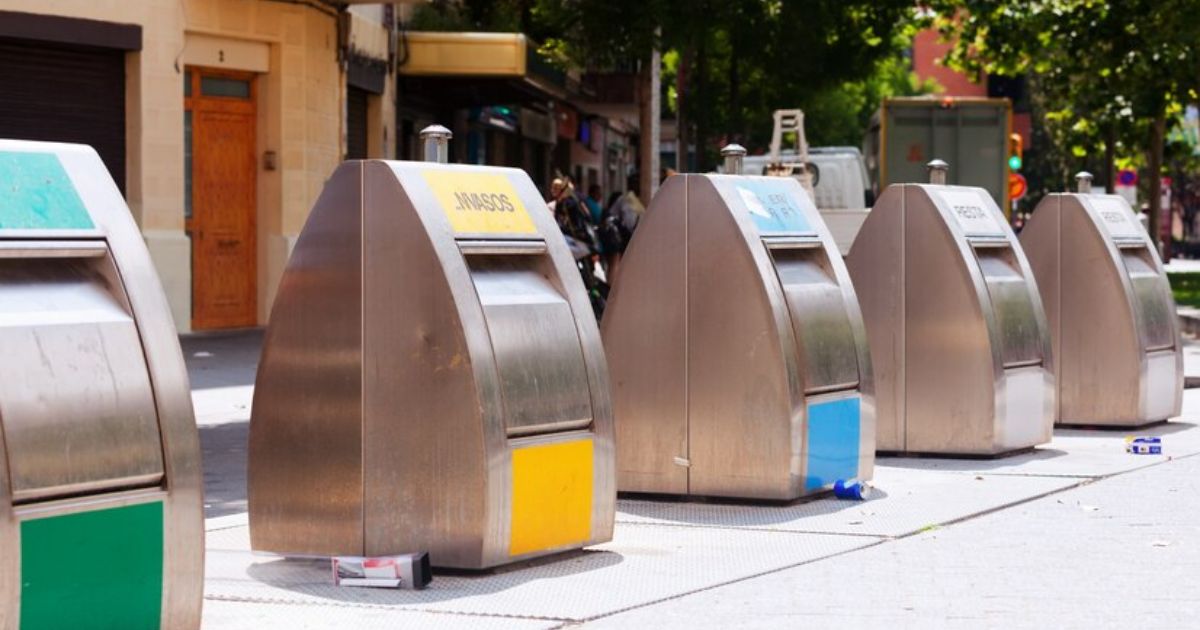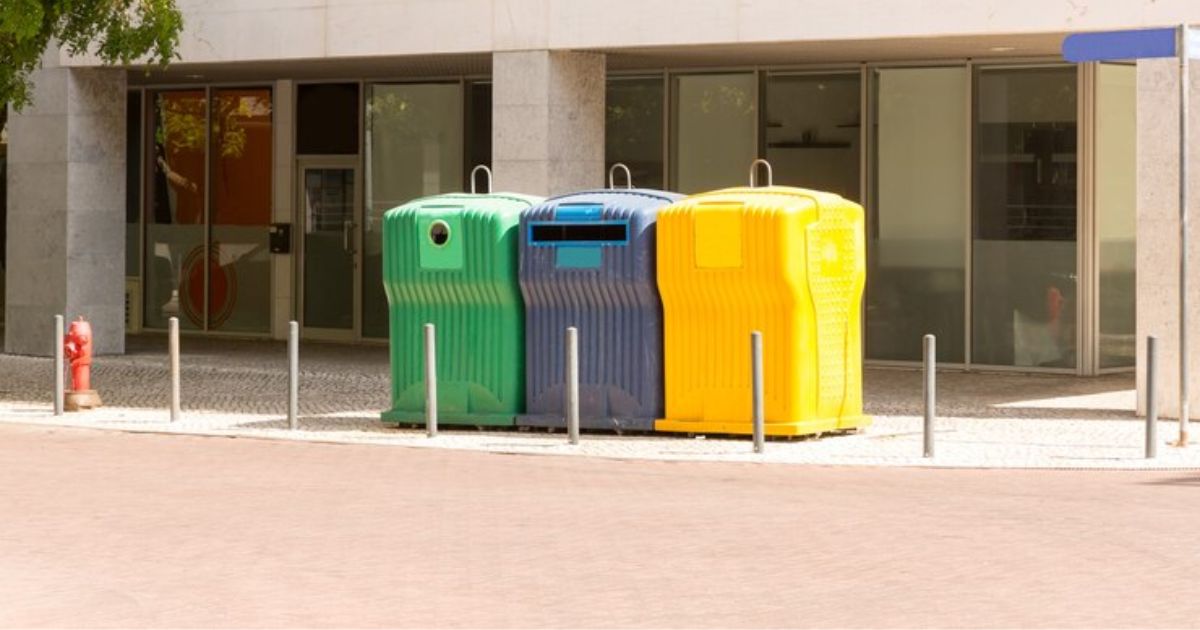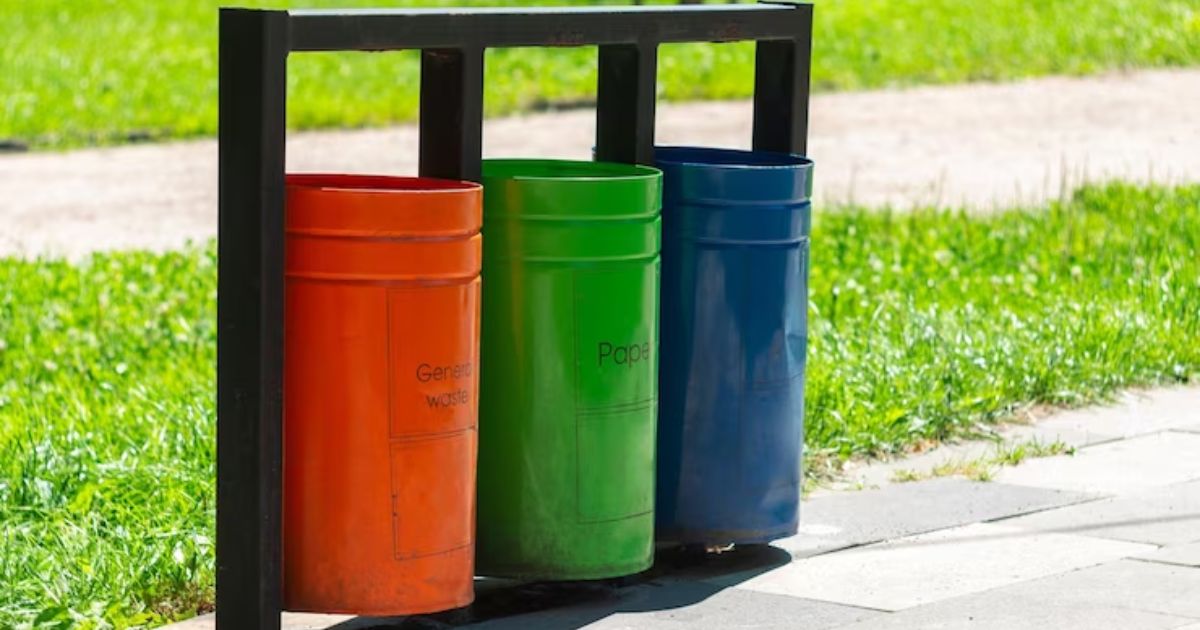“Looking to keep your town clean and well-maintained? Discover the key factors that determine the number of outdoor trash storage cans in your community. From residential areas to public parks, commercial districts to healthcare facilities, this article delves into the data-driven analysis of trash can distribution. Find out how the government plays a crucial role in placement and what influences the overall number of cans. Join us as we explore the solution-oriented approach to keeping your town tidy and fostering a sense of belonging.
Key Takeaways
- Proper distribution of trash cans in residential areas and commercial districts is essential for effective waste management and cleanliness.
- Strategic placement of an adequate number of trash cans in public parks promotes cleanliness, reduces litter, and fosters a sense of pride among visitors.
- Trash can placement in educational institutions, such as classrooms and school cafeterias, plays a crucial role in maintaining cleanliness and promoting responsible waste disposal.
- The government plays a crucial role in establishing regulations, involving the community in decision-making, and ensuring consistency, safety, and cleanliness in trash can placement.
Trash Can Distribution in Residential Areas
In your residential area, the distribution of trash cans plays a crucial role in maintaining cleanliness and proper waste management. The impact of park cleanliness cannot be understated, as it not only enhances the aesthetic appeal but also promotes a sense of belonging and community pride. Having an adequate number of trash cans strategically placed throughout the neighborhood ensures that residents have convenient access to dispose of their waste properly.
Furthermore, it is essential to provide recycling options available alongside regular trash cans, encouraging eco-friendly practices and reducing the overall waste sent to landfills. By implementing these measures, the residential area becomes a cleaner, healthier, and more sustainable environment for everyone to enjoy.
Transitioning into the next section about trash cans in commercial districts, it is equally important to consider the distribution and accessibility of trash cans in these areas.
Trash Cans in Commercial Districts
To ensure proper waste management and cleanliness, it is crucial to consider the distribution and accessibility of trash cans in commercial districts. Here are four key points to consider:
- Placement: Trash cans should be strategically placed throughout the commercial district, ensuring that they are easily accessible and visible to both pedestrians and business owners. This will encourage people to dispose of their waste properly and reduce littering.
- Sufficient numbers: The number of trash cans should be based on the foot traffic and size of the commercial district. Having an adequate number of trash cans will prevent overflowing bins and the accumulation of trash on sidewalks, which can create an unsightly and unhygienic environment.
- Regular maintenance: Trash cans should be regularly emptied and cleaned to avoid unpleasant odors and the attraction of pests. Neglected trash cans can have a negative impact on the overall cleanliness and attractiveness of the commercial district.
- Collaboration with local businesses: Engaging local businesses in maintaining and monitoring trash cans can promote a sense of ownership and responsibility. Businesses can help ensure that trash cans are not misused or vandalized, contributing to a cleaner and more welcoming commercial district.
Public Parks and the Number of Trash Cans
Public parks play a vital role in the community, providing recreational spaces for residents and visitors alike. However, the cleanliness of these parks can greatly impact the overall experience. By strategically distributing an adequate number of trash cans throughout public parks, it ensures that visitors have convenient access to dispose of their waste, thereby promoting cleanliness and reducing litter. Collecting data on park usage and public opinion on the quantity of trash cans can help inform decision-makers on the optimal distribution to maintain a clean and enjoyable environment for all.
Trash Can Distribution
Your town’s public parks’ trash can distribution should be based on the number of visitors and the amount of waste they generate. To ensure efficient waste management and trash can accessibility, here are four key considerations:
- Visitor count: Analyze the data on park attendance to determine the average number of visitors per day. This will help determine the quantity of trash cans needed to accommodate the waste generated.
- Waste generation rate: Study waste management strategies in similar parks to estimate the average amount of waste generated per visitor. This data will help calculate the total waste volume and inform the number of trash cans required.
- Distribution density: Strategically place trash cans throughout the park, considering high-traffic areas, picnic spots, and recreational zones. This will encourage visitors to dispose of their waste properly and minimize littering.
- Regular maintenance: Implement a schedule for trash can emptying and cleaning to ensure that the park remains clean and hygienic for visitors.
Park Cleanliness Impact
Considering the impact of park cleanliness, the number of trash cans plays a crucial role in maintaining a clean and inviting environment for visitors. Adequate placement and distribution of trash cans throughout public parks are essential for effective park maintenance and litter control. A study conducted in various parks across the country revealed that parks with a higher number of trash cans had significantly less litter compared to those with fewer cans. The table below provides a comparison of two parks with different trash can distributions:
| Park | Number of Trash Cans | Litter Level |
|---|---|---|
| Park A | 10 | Low |
| Park B | 3 | High |
From the data, it is evident that Park A, with a higher number of trash cans, maintains a cleaner environment, fostering a sense of belonging and pride among visitors. To ensure park cleanliness and enhance visitor experience, it is crucial to increase the number of trash cans in public parks, enabling better litter control and promoting a cleaner and more inviting atmosphere.
Public Opinion on Quantity
Opinions on the quantity of trash cans in public parks vary widely. To paint a picture of the current public opinion, consider the following:
- Some individuals believe that there are not enough trash cans in public parks, leading to litter accumulation and a decrease in cleanliness. They argue for increased trash can accessibility to promote a cleaner environment.
- On the other hand, some people argue that the current number of trash cans in public parks is sufficient. They believe that the responsibility lies with individuals to properly dispose of their trash and participate in community clean-up initiatives.
- A significant portion of the public believes that the quantity of trash cans should be based on the size and footfall of the park. They advocate for a data-driven approach that takes into account the specific needs of each park.
- Finally, there are those who feel that the placement of trash cans is more important than the quantity. They emphasize strategic placement near high traffic areas to encourage proper disposal.
Considering these varying opinions, it becomes clear that finding a balance between trash can accessibility and individual responsibility is crucial for maintaining cleanliness in public parks. Transitioning into the subsequent section about ‘trash cans in educational institutions’, it is important to explore how different environments may warrant different approaches to trash can quantity and placement.
Trash Cans in Educational Institutions
When it comes to the number of trash cans in educational institutions, it is important to understand the specific needs and regulations in place. Trash can placement in classrooms and waste management in school cafeterias are crucial aspects of maintaining cleanliness and promoting responsible waste disposal. In classrooms, having easily accessible trash cans encourages students to dispose of their waste properly, reducing clutter and promoting a clean learning environment.
Additionally, placing recycling bins alongside trash cans can help educate students about the importance of recycling and encourage them to participate in sustainable practices. In school cafeterias, sufficient trash cans should be strategically placed to accommodate the high volume of waste generated during meal times. Implementing effective waste management systems in educational institutions not only fosters a sense of belonging and responsibility among students but also sets an example for future generations on the importance of environmental stewardship.
The Role of Government in Trash Can Placement
To ensure efficient waste management practices, the government plays a crucial role in determining the appropriate placement of trash cans throughout the town, regularly assessing the needs and regulations of different areas. Here are four key ways the government contributes to effective trash can placement:
- Government regulations: The government establishes rules and guidelines for trash can placement, ensuring consistency and adherence to safety standards. These regulations help maintain a clean and organized environment for the community.
- Community involvement: The government actively seeks input from the community to understand their specific needs and preferences regarding trash can placement. This involvement fosters a sense of belonging and empowers citizens to contribute to decision-making processes.
- Data-driven analysis: The government utilizes data on waste generation, population density, and geographical factors to determine the optimal number and location of trash cans. This analytical approach ensures resources are allocated efficiently.
- Solution-oriented approach: The government focuses on finding practical solutions to address the trash management needs of different areas. This includes considering factors such as foot traffic, public spaces, and commercial areas to provide convenient and accessible trash can placement for everyone.
Trash Cans in Recreational Areas and Sports Facilities
When it comes to trash cans in recreational areas and sports facilities, adequate placement is crucial. These areas tend to generate a large amount of waste, and without proper trash cans, litter can quickly accumulate. To address this issue, it is important to strategically place trash cans throughout these areas, ensuring easy access and convenience for visitors. Additionally, offering recycling options alongside trash cans can help promote environmental responsibility and reduce the overall waste generated.
Adequate Trash Can Placement
For optimal waste disposal in recreational areas and sports facilities, ensure that every trash can’s placement is well-thought-out and strategic. Here are four key considerations to help you achieve this goal:
- Strategic Distribution: Place trash cans at regular intervals throughout the area to maximize accessibility and encourage proper waste disposal. Ensure that no area is too far from a trash can, reducing the chances of littering.
- Visibility and Signage: Clearly mark trash can locations with visible signs to guide visitors. Use recognizable symbols and clear instructions to promote proper waste management and make it easy for everyone to find and use the trash cans.
- Capacity and Maintenance: Choose trash cans with adequate capacity to handle the expected waste volume. Regularly empty and maintain the trash cans to prevent overflowing and maintain cleanliness in the area.
- Collaboration and Education: Foster a sense of community by involving visitors in waste management efforts. Provide educational materials and engage with visitors to raise awareness about the importance of proper waste disposal.
Recycling Options Available
Now let’s explore the recycling options available in these areas to further enhance waste management efforts in recreational areas and sports facilities. To promote a culture of recycling, it is essential to have a well-established recycling infrastructure in place. Installing dedicated recycling bins alongside trash cans in these areas can encourage visitors to separate their waste properly. These bins should be clearly labeled and easily accessible, making it convenient for people to recycle. Additionally, community awareness plays a crucial role in increasing recycling rates.
By educating visitors about the importance of recycling and the positive impact it has on the environment, we can inspire them to actively participate in recycling efforts. By implementing these measures, we can create a sustainable environment within recreational areas and sports facilities, fostering a sense of belonging and responsibility towards our community. Moving forward, let’s now shift our focus to trash cans in public transportation hubs.
Trash Cans in Public Transportation Hubs
You’ll find several trash cans in public transportation hubs throughout this town. These strategically placed trash cans play a crucial role in maintaining a clean and organized environment. Here’s why their placement is effective and how they impact waste management:
- Convenience: The trash cans are conveniently located near entrances and exits, making it easy for commuters to dispose of their waste without inconveniencing others.
- Reducing litter: By providing designated disposal areas, the trash cans discourage commuters from littering, resulting in a cleaner and more aesthetically pleasing public transportation hub.
- Efficient waste management: The regular maintenance and emptying of these trash cans ensure that waste is properly disposed of, preventing overflow and potential health hazards.
- Encouraging responsible behavior: The presence of these trash cans sends a clear message to commuters that waste disposal is a shared responsibility, fostering a sense of belonging and community pride.
Trash Cans in Tourist Hotspots and Attractions
When it comes to tourist hotspots and attractions, adequate placement of trash cans is crucial. Not only does it ensure that visitors have convenient access to dispose of their waste, but it also helps maintain cleanliness in these high-traffic areas. Additionally, the maintenance and cleanliness of trash cans in tourist hotspots can have a significant impact on the overall tourist experience, as a poorly managed waste system can leave a negative impression on visitors.
Adequate Trash Can Placement
To ensure cleanliness and convenience for visitors, proper placement of trash cans in tourist hotspots and attractions is essential. Here are four key considerations for adequate trash can placement:
- Visibility: Place trash cans in highly visible areas to encourage visitors to use them. Clear signage can further guide tourists towards the designated trash areas.
- Accessibility: Ensure that trash cans are easily accessible and strategically placed near entrances, exits, and high-traffic areas. This will encourage visitors to dispose of their trash conveniently without having to search for a bin.
- Capacity: Choose trash cans with sufficient capacity to handle the expected volume of waste generated in tourist hotspots and attractions. Regular maintenance and emptying should be scheduled to prevent overflowing bins.
- Aesthetics: Consider using aesthetically pleasing trash can designs that blend with the surroundings. This will help maintain the visual appeal of the tourist spot while serving its practical purpose.
Maintenance and Cleanliness
For a clean and inviting environment in tourist hotspots and attractions, it is important to regularly maintain and clean the trash cans. Proper park maintenance and waste management are crucial in ensuring the cleanliness of these areas. By implementing a comprehensive maintenance plan, the local authorities can address any issues promptly and efficiently. This includes regular emptying of trash cans, ensuring they are in good condition, and cleaning them regularly to prevent unpleasant odors and the spread of diseases.
Additionally, it is essential to educate tourists and visitors about the importance of proper waste disposal and encourage them to use the designated trash cans. By actively maintaining and cleaning the trash cans in tourist hotspots and attractions, we can create a pleasant environment that promotes a sense of belonging and pride for both locals and visitors alike.
Impact on Tourist Experience?
To enhance your tourist experience in popular hotspots and attractions, the cleanliness and maintenance of trash cans play a crucial role. Proper waste management not only ensures a clean and pleasant environment but also contributes to overall tourist satisfaction. Here are four key ways in which trash cans impact your experience:
- Convenience: Ample and strategically placed trash cans make it easy for tourists to dispose of their waste, reducing clutter and maintaining the attractiveness of the area.
- Hygiene: Well-maintained trash cans minimize the risk of odors and pests, creating a more sanitary environment for tourists.
- Aesthetics: Trash cans that blend seamlessly with the surroundings contribute to the visual appeal of tourist hotspots and attractions.
- Environmental Responsibility: Effective waste management through well-designed trash cans promotes sustainable practices, leaving a positive impression on tourists who value eco-friendly destinations.
Trash Cans in Healthcare Facilities and Hospitals
You’ll find numerous trash cans in healthcare facilities and hospitals. Trash can accessibility is an important aspect of waste management policies in these settings. It is crucial to ensure that there are enough trash cans strategically placed throughout the facilities to promote cleanliness and hygiene. Adequate trash can placement allows for easy disposal of waste, preventing the spread of infections and maintaining a safe environment for patients, staff, and visitors.
In healthcare facilities, waste disposal is a critical component of infection control protocols, and having a sufficient number of trash cans plays a vital role in achieving this goal. In the next section, we will explore the factors influencing the overall number of trash cans needed in healthcare facilities and hospitals.
Factors Influencing the Overall Number of Trash Cans
To determine the overall number of trash cans needed, consider several key factors:
- Population Density: The number of trash cans should be proportional to the population density of the town. Higher population density areas will require more trash cans to accommodate the increased waste generation.
- Trash Can Accessibility: It is important to ensure that trash cans are easily accessible to all residents. Placing trash cans at convenient locations throughout the town, such as near residential areas, parks, and public spaces, will encourage proper waste disposal and reduce littering.
- Waste Management Practices: The town’s waste management practices should also be taken into account. If the town has efficient recycling programs or composting facilities, the overall number of trash cans required may be reduced.
- Future Growth: Consider the projected growth of the town. If the population is expected to increase in the future, it is essential to plan for additional trash cans to accommodate the higher waste generation.
FAQ,s
What Is the Average Cost of a Trash Can in This Town?
The average price of a trash can in this town varies depending on the types available. To find out the exact cost, you can check local stores or consult with the municipal authorities.
Are There Any Recycling Bins Available in Residential Areas?
In residential areas, recycling initiatives are implemented to promote sustainable practices. These initiatives provide recycling bins for the benefits of recycling, such as reducing waste and conserving resources. Join this movement and contribute to a cleaner, greener community.
Who Is Responsible for Emptying and Maintaining the Trash Cans in Commercial Districts?
You’re responsible for emptying and maintaining the trash cans in commercial districts. It’s crucial to take ownership of this responsibility to ensure the proper maintenance and cleanliness of the area.
How Often Are the Trash Cans in Public Parks Emptied?
To encourage more people to use trash cans in public parks, it’s important to consider the frequency of emptying. Regular emptying ensures cleanliness and prevents overflowing. By increasing the number of trash cans and implementing a consistent emptying schedule, park cleanliness can be improved.
What Are the Consequences for Littering in This Town?
If you’re wondering about the consequences of littering in this town, there are fines and community service. However, the local government is also actively running public awareness campaigns to encourage responsible waste disposal.
Conclusion
In this town, trash cans are strategically placed in residential areas, commercial districts, public parks, educational institutions, public transportation hubs, tourist hotspots, healthcare facilities, and hospitals. The government plays a crucial role in ensuring the proper distribution of these trash cans. Factors such as population density, foot traffic, and waste generation influence the overall number of trash cans. By analyzing these factors and implementing data-driven solutions, we can ensure a clean and sustainable environment for all. Let’s keep our town tidy and thriving!










